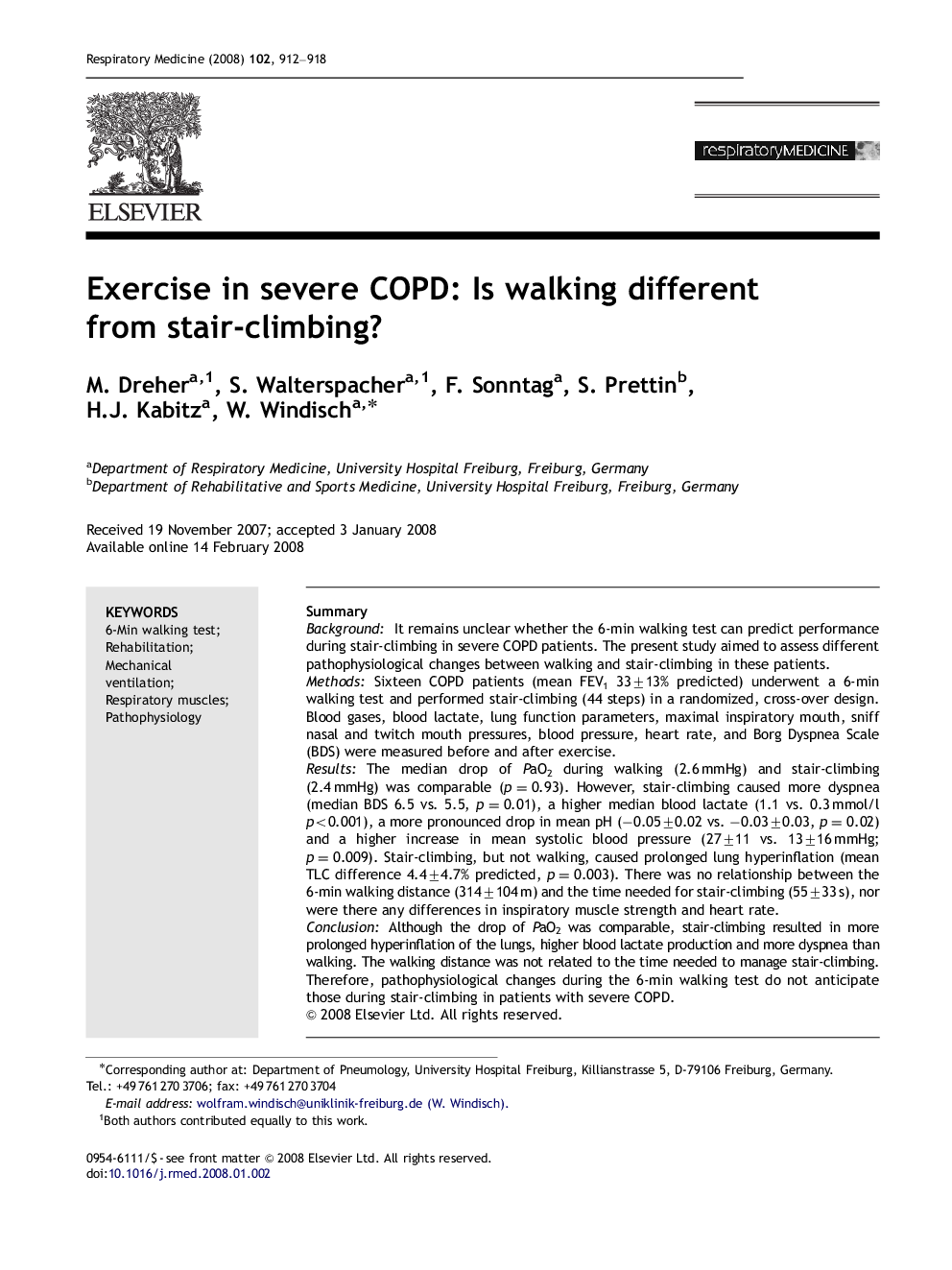| Article ID | Journal | Published Year | Pages | File Type |
|---|---|---|---|---|
| 4212409 | Respiratory Medicine | 2008 | 7 Pages |
SummaryBackgroundIt remains unclear whether the 6-min walking test can predict performance during stair-climbing in severe COPD patients. The present study aimed to assess different pathophysiological changes between walking and stair-climbing in these patients.MethodsSixteen COPD patients (mean FEV1 33±13% predicted) underwent a 6-min walking test and performed stair-climbing (44 steps) in a randomized, cross-over design. Blood gases, blood lactate, lung function parameters, maximal inspiratory mouth, sniff nasal and twitch mouth pressures, blood pressure, heart rate, and Borg Dyspnea Scale (BDS) were measured before and after exercise.ResultsThe median drop of PaO2 during walking (2.6 mmHg) and stair-climbing (2.4 mmHg) was comparable (p=0.93). However, stair-climbing caused more dyspnea (median BDS 6.5 vs. 5.5, p=0.01), a higher median blood lactate (1.1 vs. 0.3 mmol/l p<0.001), a more pronounced drop in mean pH (−0.05±0.02 vs. −0.03±0.03, p=0.02) and a higher increase in mean systolic blood pressure (27±11 vs. 13±16 mmHg; p=0.009). Stair-climbing, but not walking, caused prolonged lung hyperinflation (mean TLC difference 4.4±4.7% predicted, p=0.003). There was no relationship between the 6-min walking distance (314±104 m) and the time needed for stair-climbing (55±33 s), nor were there any differences in inspiratory muscle strength and heart rate.ConclusionAlthough the drop of PaO2 was comparable, stair-climbing resulted in more prolonged hyperinflation of the lungs, higher blood lactate production and more dyspnea than walking. The walking distance was not related to the time needed to manage stair-climbing. Therefore, pathophysiological changes during the 6-min walking test do not anticipate those during stair-climbing in patients with severe COPD.
